What to do if Siemens Transmitter shows INVALID CFG PARAM?
- AApril UnderwoodSep 23, 2025
If your Siemens Transmitter shows INVALID CFG PARAM, it indicates that the factory settings for Functional Safety are faulty. Replace the device.
What to do if Siemens Transmitter shows INVALID CFG PARAM?
If your Siemens Transmitter shows INVALID CFG PARAM, it indicates that the factory settings for Functional Safety are faulty. Replace the device.
What to do if Siemens Transmitter failure occurs due to "Out of service" mode?
If the Siemens Transmitter output signal does not represent the process value because the device mode is set to "Out of service", you should disable the "Out of service" mode and enable normal operation.
How to fix invalid device configuration on Siemens SITRANS P420 Transmitter?
If the Siemens Transmitter has an invalid device configuration because one or more parameters are set to invalid values, review the configuration values and adjust as necessary.
What to do if the Siemens SITRANS P420 is in function test mode?
If the Siemens Transmitter output signal is temporarily invalid because work is being performed on the device, use manual mode over HMI or disable the engineering system.
Why is my Siemens SITRANS P420 Transmitter showing 'Maintenance required'?
If you receive a 'Maintenance required' notification for your Siemens Transmitter, it means the output signal is still valid, but wear reserve is almost exhausted, or a function will soon be limited. It is recommended to schedule maintenance as soon as possible.
What does INVALID CFG LOOPT mean on my Siemens Transmitter?
INVALID CFG LOOPT on your Siemens Transmitter indicates that the loop current is fixed because loop test or multidrop mode are enabled. To return to normal operation, disable the loop test or multidrop mode.
What to do if the Siemens Transmitter display is empty and there are no transmission pulses?
If the Siemens Transmitter display is empty and there are no transmission pulses, the cause may be no or incorrect supply voltage. Check the voltage at the terminals, the connections, and the wiring.
Why does my Siemens Transmitter display "#####" instead of the current measured value?
If the Siemens Transmitter displays "#####" instead of the current measured value, it means that the value is too large to appear on the display. Adjust the unit so that a lower value can be displayed, for example, by selecting bars instead of millibars.
What to do if Event counter 1 Number overruns above threshold Maintenance alarm on Siemens SITRANS P420?
The 'Event counter 1 Number overruns above threshold Maintenance alarm' on your Siemens Transmitter indicates that the number of overruns of the process value, which is set in the 'Upper limit' and 'Monitored value' parameters, has reached the specified threshold. To resolve this, reset and acknowledge the event counter, then check the process conditions and verify the limit monitoring and event counter settings.
What to do if Siemens SITRANS P420 Transmitter is in safety validation mode?
If the Siemens Transmitter is in safety validation mode, complete the functional test and confirm that it was successful in the Functional Safety wizard.
Step-by-step guide to commissioning the device without a display.
Details qualifications and safety measures for hazardous areas.
Describes the measuring tasks the pressure transmitter can perform.
Describes how the pressure transmitter operates, including electronics and sensors.
Provides critical safety instructions for installation and mounting.
Details guidelines and warnings for correct mounting procedures.
Steps for installing electrical connections and cable entries.
Crucial safety instructions for connecting the device.
General guidance on connecting the device.
Detailed steps for connecting the device to the system.
Instructions for operating the device when it has a display.
Step-by-step guide to changing parameter values.
Essential safety instructions for commissioning the device.
Step-by-step guide to commissioning without a display.
Step-by-step guide for commissioning with a display.
Details parameter assignment using the device's display.
How to set the lower and upper range values without pressure.
Assigning desired pressure measurements without pressure.
Adjusts the device for various measuring tasks.
Explains zero-point errors and their correction.
Assigning pressure measurements with pressure applied.
Allows selection of units for Level, Volume, Flow, and Mass.
Enables or disables user PIN for parameter protection.
Enables the Functional Safety feature.
Uses a wizard to configure the device in five steps.
Simulates input/output values and diagnostics remotely.
Defines custom characteristic curves for unusual vessels.
Calibrates the device characteristic curve at two trim points.
Monitors process values and counts events based on limits.
Defines SIL, fault tolerance, and device classification for safety functions.
Defines the device's safety function and accuracy.
How to validate safety-related parameters and functions.
Lists parameters critical for Functional Safety.
Describes checks in 'Functional Safety enabled' mode.
How to enable/disable Functional Safety using wizards.
Steps to enable Functional Safety via device display.
Steps to validate safety-related parameters.
Steps to validate the safety function.
How to enable Functional Safety remotely.
Device mode when a safety-related error occurs.
How to acknowledge safety-related errors remotely.
How to disable Functional Safety via device display.
How to disable Functional Safety remotely.
Details intervals and rules for proof tests.
Essential safety instructions for service and maintenance.
General guidelines for maintenance and repair tasks.
Explains symbols indicating device status.
Lists diagnostic message IDs, causes, and remedies.
Provides solutions for common problems and troubleshooting steps.
Input specifications for gauge pressure.
Input specs for gauge pressure with front-flush diaphragm.
Input specs for gauge pressure from differential pressure series.
Input specs for absolute pressure from gauge pressure series.
Input specs for absolute pressure with front-flush diaphragm.
Input specs for absolute pressure from differential pressure series.
Input specs for differential pressure and flow.
Input specifications for level measurements.
Details measuring accuracy specifications for SITRANS P320.
Accuracy specs for gauge pressure.
Accuracy for gauge pressure from differential pressure series.
Accuracy for absolute pressure from gauge/differential pressure series.
Accuracy for absolute pressure with front-flush diaphragm.
Accuracy for gauge pressure with front-flush diaphragm.
Accuracy for differential pressure and flow.
Details measuring accuracy specifications for SITRANS P420.
Overview of SIMATIC PDM software for device management.
Step-by-step guide to commissioning the device without a display.
Details qualifications and safety measures for hazardous areas.
Describes the measuring tasks the pressure transmitter can perform.
Describes how the pressure transmitter operates, including electronics and sensors.
Provides critical safety instructions for installation and mounting.
Details guidelines and warnings for correct mounting procedures.
Steps for installing electrical connections and cable entries.
Crucial safety instructions for connecting the device.
General guidance on connecting the device.
Detailed steps for connecting the device to the system.
Instructions for operating the device when it has a display.
Step-by-step guide to changing parameter values.
Essential safety instructions for commissioning the device.
Step-by-step guide to commissioning without a display.
Step-by-step guide for commissioning with a display.
Details parameter assignment using the device's display.
How to set the lower and upper range values without pressure.
Assigning desired pressure measurements without pressure.
Adjusts the device for various measuring tasks.
Explains zero-point errors and their correction.
Assigning pressure measurements with pressure applied.
Allows selection of units for Level, Volume, Flow, and Mass.
Enables or disables user PIN for parameter protection.
Enables the Functional Safety feature.
Uses a wizard to configure the device in five steps.
Simulates input/output values and diagnostics remotely.
Defines custom characteristic curves for unusual vessels.
Calibrates the device characteristic curve at two trim points.
Monitors process values and counts events based on limits.
Defines SIL, fault tolerance, and device classification for safety functions.
Defines the device's safety function and accuracy.
How to validate safety-related parameters and functions.
Lists parameters critical for Functional Safety.
Describes checks in 'Functional Safety enabled' mode.
How to enable/disable Functional Safety using wizards.
Steps to enable Functional Safety via device display.
Steps to validate safety-related parameters.
Steps to validate the safety function.
How to enable Functional Safety remotely.
Device mode when a safety-related error occurs.
How to acknowledge safety-related errors remotely.
How to disable Functional Safety via device display.
How to disable Functional Safety remotely.
Details intervals and rules for proof tests.
Essential safety instructions for service and maintenance.
General guidelines for maintenance and repair tasks.
Explains symbols indicating device status.
Lists diagnostic message IDs, causes, and remedies.
Provides solutions for common problems and troubleshooting steps.
Input specifications for gauge pressure.
Input specs for gauge pressure with front-flush diaphragm.
Input specs for gauge pressure from differential pressure series.
Input specs for absolute pressure from gauge pressure series.
Input specs for absolute pressure with front-flush diaphragm.
Input specs for absolute pressure from differential pressure series.
Input specs for differential pressure and flow.
Input specifications for level measurements.
Details measuring accuracy specifications for SITRANS P320.
Accuracy specs for gauge pressure.
Accuracy for gauge pressure from differential pressure series.
Accuracy for absolute pressure from gauge/differential pressure series.
Accuracy for absolute pressure with front-flush diaphragm.
Accuracy for gauge pressure with front-flush diaphragm.
Accuracy for differential pressure and flow.
Details measuring accuracy specifications for SITRANS P420.
Overview of SIMATIC PDM software for device management.
| Type | Pressure transmitter |
|---|---|
| Output Signal | 4-20 mA, HART |
| Temperature Range | -40 to +85 °C (-40 to +185 °F) |
| Process Connection | G1/2, 1/2 NPT |
| Protection Class | IP65 / NEMA 4X |
| Electrical Connection | M20 x 1.5 or 1/2 NPT |
| Material | Stainless steel |
| Display | Optional LCD |

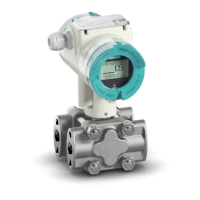

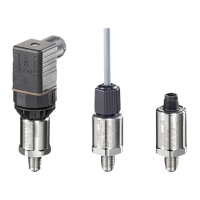
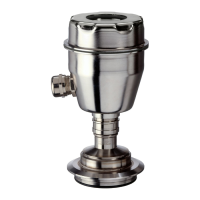

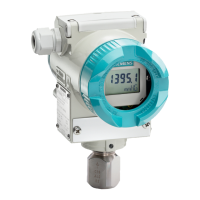
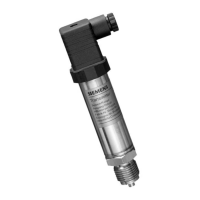
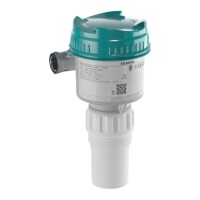

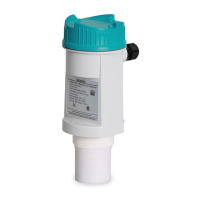
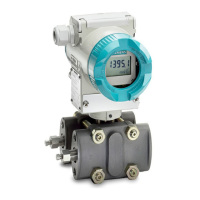
